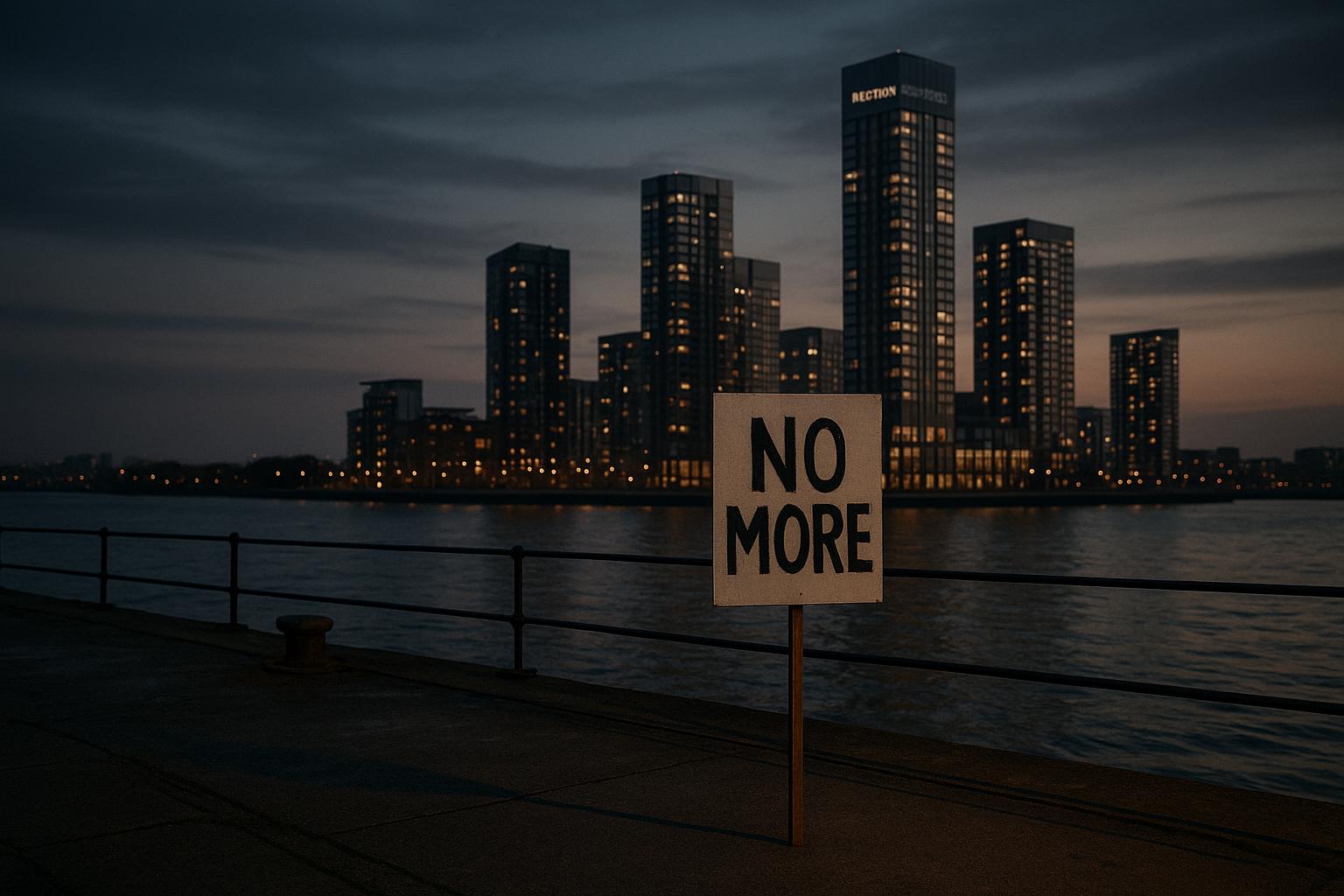Plans to build nearly 3,000 new homes in Beckton, Newham, have been approved despite significant criticism over the minimal provision of affordable housing within the scheme. The first phase of the Beckton Riverside development will consist of 2,977 homes between Armada Way and Atlantis Avenue, but only 185 of these—equating to just 6.2%—will be allocated for social rent, with no other affordable housing options included.
During the Newham Council strategic development committee meeting on 23 October, Labour committee chair Rachel Tripp condemned the “almost unbelievably low percentage of affordable homes” proposed. She emphasised that without family-sized homes at social rent, the development fails to meet the needs of Newham’s most vulnerable residents. Tripp highlighted the ongoing struggles faced by families in temporary accommodation and those living in overcrowded conditions, pointing out that poor housing quality can negatively impact mental health, schooling, and educational outcomes.
The council’s planning policy requires between 35% and 50% of new homes to be affordable, with developers submitting a financial viability assessment if proposing less than 50% affordable housing. St William Homes LLP, a subsidiary of Berkeley Homes, admitted the complex challenges of redeveloping the former gasworks site, which has been derelict since the 1960s, as the reason behind the low affordable housing offer. A representative from St William told councillors that while the current social rent provision is low, the developer hopes to secure public subsidies from Homes England and the Greater London Authority to increase affordable housing later in the project.
The representative said that obtaining planning permission now would position St William better to apply for such funding, although he acknowledged that these commitments could not be guaranteed. “We wish that we could do more. What we can give you is a commitment to try and deliver more later,” he added. Meanwhile, council planning officers supported approving the plans after independently reviewing the viability assessment and recognising the substantial abnormal costs required to prepare the contaminated site for construction. These costs were deemed a reasonable justification for the lower affordable housing percentage. Additionally, St William will have to conduct financial viability reassessments at early, mid, and late stages of the development to maximise affordable housing if further grant funding becomes available.
The committee voted unanimously to approve the plans, subject to final approval by the Greater London Authority due to the project's scale. This decision comes amid wider regeneration efforts across the Royal Docks and Beckton Riverside Opportunity Area, where thousands of new homes are planned. For context, the ongoing Thameside West development within the same Opportunity Area aims to deliver 5,000 new homes with 39% designated as affordable housing, reflecting a much higher proportion than that proposed in Beckton Riverside's initial phase.
Elsewhere in the Beckton Riverside area, Places for London has recently appointed Ballymore as a joint venture partner for the Limmo Peninsula development near Canning Town. That scheme promises around 1,400 homes with 40% affordable housing, alongside new infrastructure improvements such as a bridge linking Limmo Peninsula to Canning Town and enhanced public green spaces. These projects are part of a broader vision to address London's housing crisis while improving connectivity and community facilities in East London.
Looking ahead, Beckton Riverside’s second phase, expected to commence in the early 2030s, is planned to deliver a further 3,000 homes, alongside new schools, health, and sports facilities. This phase will follow the anticipated extension of the Docklands Light Railway, which is poised to enhance transport links and make the town centre vision for Beckton Riverside more viable.
While the Beckton Riverside development marks a significant step toward regenerating a long-neglected brownfield site and creating a new urban quarter, the controversy around the limited affordable housing provision highlights ongoing tensions between development viability and community needs. As the project progresses, all eyes will be on whether the promised additional affordable housing materialises and how the new homes will serve the residents of Newham.
📌 Reference Map:
- Paragraph 1 – [1] (MyLondon), [2] (Newham Voices)
- Paragraph 2 – [1] (MyLondon), [2] (Newham Voices)
- Paragraph 3 – [1] (MyLondon), [2] (Newham Voices)
- Paragraph 4 – [1] (MyLondon), [2] (Newham Voices), [6] (Berkeley Group)
- Paragraph 5 – [1] (MyLondon), [6] (Berkeley Group)
- Paragraph 6 – [1] (MyLondon), [4] (London.gov.uk)
- Paragraph 7 – [3] (Royal Docks London), [4] (London.gov.uk)
- Paragraph 8 – [7] (Opportunity London)
- Paragraph 9 – [1] (MyLondon), [2] (Newham Voices)
Source: Noah Wire Services
